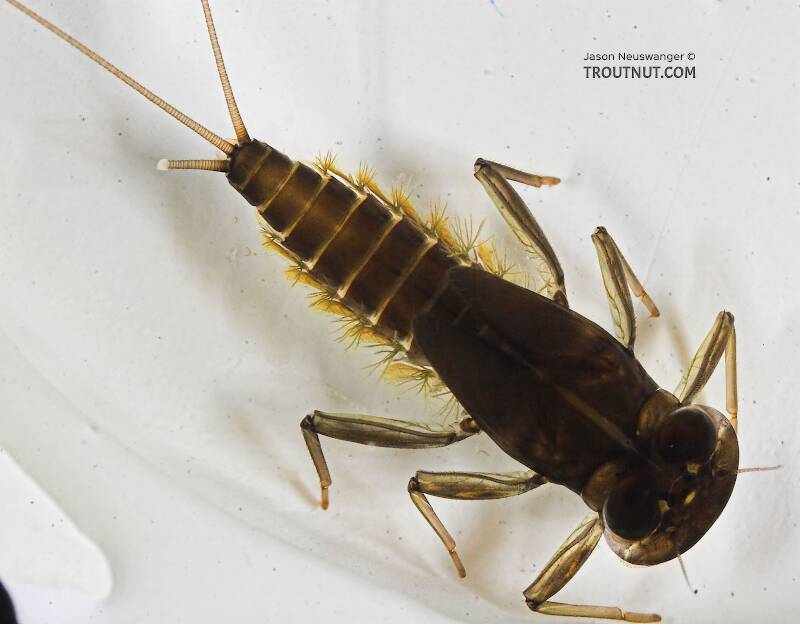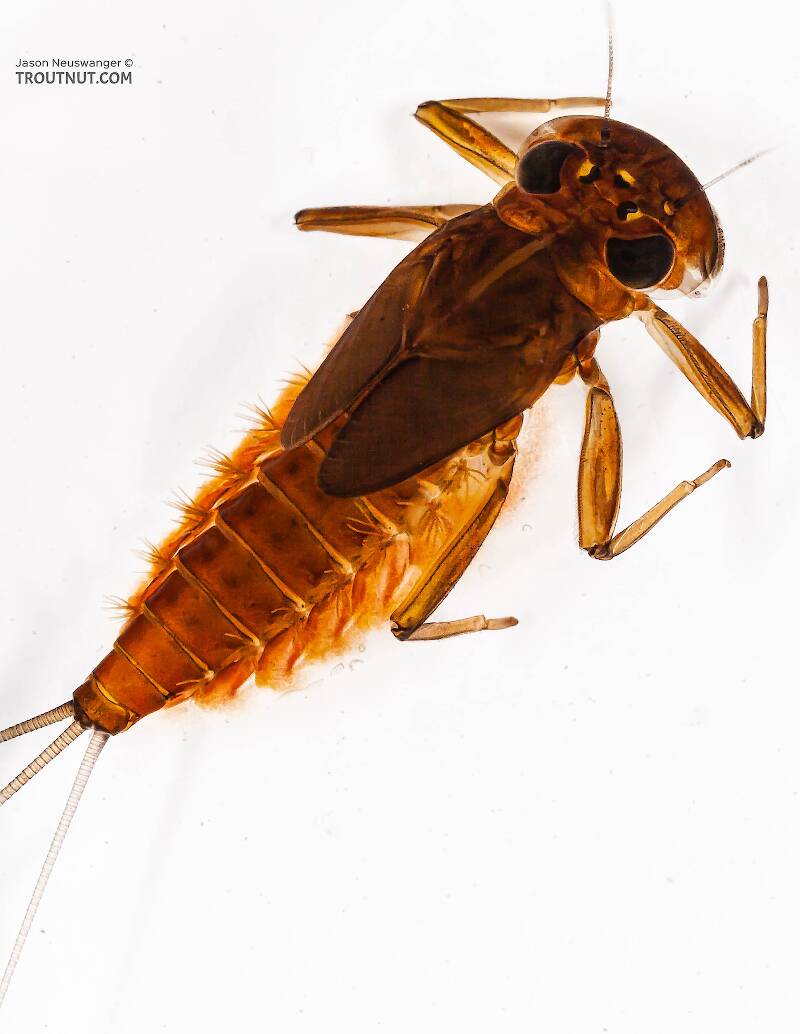
Blue-winged Olives
Baetis
Tiny Baetis mayflies are perhaps the most commonly encountered and imitated by anglers on all American trout streams due to their great abundance, widespread distribution, and trout-friendly emergence habits.

Mayfly Species Rhithrogena impersonata (Dark Red Quills)
Where & when
I have not found any discussion of fishable hatches of this species, but I have sampled two small streams where the nymph population is so dense that there must be good fishing to the adults unless they have the worst of emergence characteristics.In 26 records from GBIF, adults of this species have mostly been collected during June (54%), July (15%), May (15%), and August (8%).
Species Range
Hatching behavior
Spinner behavior
Time of day: Dusk
Nymph biology
Current speed: Fast
Substrate: Gravel
Physical description
Most physical descriptions on Troutnut are direct or slightly edited quotes from the original scientific sources describing or updating the species, although there may be errors in copying them to this website. Such descriptions aren't always definitive, because species often turn out to be more variable than the original describers observed. In some cases, only a single specimen was described! However, they are useful starting points.
Male Spinner
Wing length: 10 mm
A species of the jejuna-undulata group, having no lateral spine basally on penes; small apical spines present on each division of penes.
Head and thorax deep brown; thoracic sternum paler, rather ochreous brown. Legs ochreous brown; femora “‘broadly shaded in their central portion with deeper brown, especially noticeable on the forelegs’” (McD.). Wings hyaline; a slight brownish tinge at base. Venation strong, blackish. Abdominal tergites deep brown; sternites paler, ochreous brown. Forceps and tails dark brown. Penes with no lateral basal spines on outer margin; apices “broader and much less outcurved” (McD.) than in the allied Rhithrogena jejuna, each division bearing several small apical spines (see fig. 101).
Distinguished from R. jejuna and Rhithrogena undulata by the small apical spines on penes, and by the fact that the penes are barely or not at all outcurved at tips.
Specimens of the Mayfly Species Rhithrogena impersonata
3 Nymphs
Start a Discussion of Rhithrogena impersonata
References
- Caucci, Al and Nastasi, Bob. 2004. Hatches II. The Lyons Press.
- Leonard, Justin W. and Fannie A. Leonard. 1962. Mayflies of Michigan Trout Streams. Cranbrook Institute of Science.
- Needham, James G., Jay R. Traver, and Yin-Chi Hsu. 1935. The Biology of Mayflies. Comstock Publishing Company, Inc.
- Schwiebert, Ernest G. 1955. Matching the Hatch. MacMillan Publishing Company.
Mayfly Species Rhithrogena impersonata (Dark Red Quills)
Species Range
Common Names
Resources
- NatureServe
- Integrated Taxonomic Information System
- Global Biodiversity Information Facility
- Described by McDunnough (1925)





